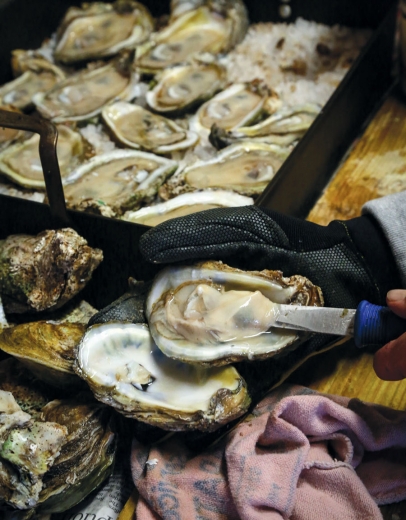To Chew or Eschew, that is the question when eating oysters
Oysters are high in zinc (known as the aphrodisiac mineral), brain- and heart-boosting omega-3 fatty acids and vitamins A, B12, C and E. They can also carry the bacterium Vibrio vulnificus, which occurs naturally when coastal waters warm to 68°F. or greater— usually June through September (another reason to eschew raw oysters in months without an “R”). Individuals with liver disease, diabetes, cancer, hemochromatosis or any other condition, known or unknown, that compromises the immune system risk severe illness or even death by consuming unprocessed raw oysters.
The good news? Oysters freeze beautifully, and you might be surprised to learn than many of the oysters on the half shell served in restaurants have been either previously frozen or submitted to one of two other post-harvest processes to all but eliminate the risk of transmitting Vibrio. Here’s a rundown of the three processes:
IQF: Individually quick frozen oysters are washed, glazed and flash-frozen on the half shell; they retain much of the flavor and appeal of raw oysters, without the risk. The majority of post-processed raw oysters are IQF.
HCP: Heat-cool pasteurized oysters are washed, graded and banded in the shell, then placed in a 127° water bath for 24 minutes, followed by a 15-minute chill in 40° water and sold as banded oysters.
HPP: High-pressurization processed oysters are washed, graded and banded in the shell, then subjected to high-hydrostatic pressure of 45,000 pounds per square inch before being sold either on the half shell or as banded oysters.





